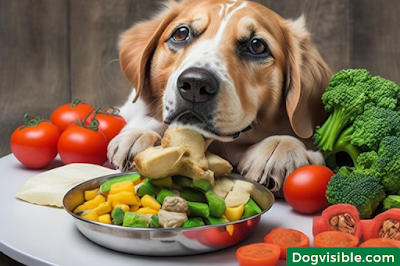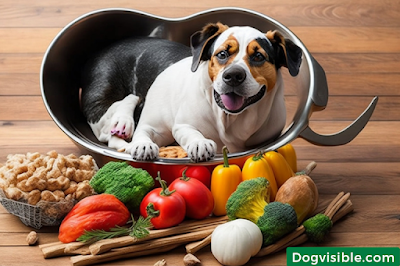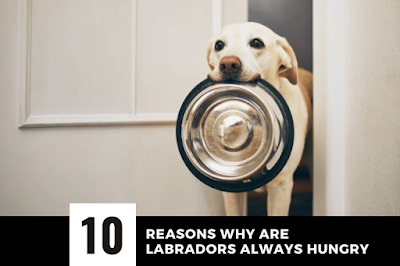How Much Food to Feed My Dog - Dogvisible
As pet owners, we want nothing but the best for our furry companions, and nutrition plays a vital role in their overall health and well-being. Properly feeding your dog is essential to ensure they receive the right balance of nutrients to support their growth, energy levels, and longevity.
In this comprehensive guide, we will delve into the question that many pet owners ask: "How much food should I feed my dog?" We aim to provide you with valuable insights and guidance so that you can make informed decisions about your canine companion's diet.
IN THIS ARTICLE
- How Much Food to Feed My Dog?
- Understanding Your Dog's Unique Needs
- Calculating Daily Caloric Needs of Dog
- Choosing the Right Dog Food
- Feeding Guidelines and Portion Control for Dog
- Summary
How Much Food to Feed My Dog?
Determining the appropriate amount of food to feed your dog is a critical aspect of their diet. Overfeeding or underfeeding can lead to weight issues, nutritional deficiencies, or other health problems. Here's a breakdown of how to determine the correct portion size for your dog. So, grab a treat for your furry friend, and let's dive in!
Understanding Your Dog's Unique Needs
Every dog is unique, and various factors contribute to determining their dietary requirements.
Understanding these factors is crucial in determining how much food you should feed your dog.
1. Breed
Different breeds have different sizes, growth rates, and metabolic rates, which influence their calorie needs. Larger breeds, such as Great Danes, require more calories than smaller breeds, like Chihuahuas.
2. Age
Puppies, adult dogs, and senior dogs have varying nutritional needs. Puppies need more calories to support their rapid growth and development, while senior dogs may require fewer calories due to decreased activity levels.
3. Size
The size of your dog is an important consideration when determining portion sizes. Smaller dogs have smaller stomach capacities and may require more frequent, smaller meals compared to larger breeds.
4. Activity Level
Active dogs with high energy expenditure, such as working or sporting breeds, require more calories than less active dogs. Regular exercise should be factored into their dietary plan.
5. Health Status
Certain health conditions, such as diabetes or obesity, may require specific dietary adjustments. It's important to consult with your veterinarian for personalized recommendations in these cases.
Calculating Daily Caloric Needs of Dog
To determine the appropriate amount of food for your dog, it's crucial to calculate their daily caloric needs accurately. While general guidelines can provide a starting point, individual variations must be considered.
Here's a step-by-step process to calculate your dog's daily caloric requirements:
1. Consult with Your Veterinarian
Your veterinarian is your best resource for understanding your dog's specific needs. They can evaluate your dog's health, age, weight, and activity level to provide personalized recommendations.
2. Determine Resting Energy Requirement (RER)
RER represents the number of calories your dog needs to maintain their weight at rest. It is calculated using the formula: RER = 70 × (weight in kg)^0.75. If you prefer to use pounds, divide the weight by 2.2 to convert it to kilograms.
3. Factor in Activity Level
Once you have the RER, you need to consider your dog's activity level. For sedentary dogs, multiply the RER by 1.2. For moderately active dogs, multiply by 1.4, and for highly active dogs, multiply by 1.8. This adjustment accounts for the calories burned during exercise.
4. Consider Life Stage
Puppies and pregnant or lactating dogs have higher energy requirements. Adjust the calculated value accordingly based on your dog's life stage.
Choosing the Right Dog Food
Now that you have determined the appropriate caloric intake for your dog, it's essential to select a high-quality dog food that meets its nutritional needs.
Here are some key considerations when choosing dog food:
- Read the Ingredients: Look for dog foods that list high-quality protein sources, such as chicken or beef, as the first ingredient. Avoid foods that contain excessive fillers, by-products, or artificial additives.
- Consider Life Stage and Health Conditions: Select a dog food specifically formulated for your dog's life stage. Puppies have different nutritional requirements than adult or senior dogs. Additionally, if your dog has specific health conditions, such as allergies or sensitivities, choose a food that addresses those needs, such as grain-free or hypoallergenic options.
- Check for Nutritional Adequacy: Look for a statement on the dog food packaging indicating that the food meets the nutritional standards set by the Association of American Feed Control Officials (AAFCO). This ensures that the food provides a complete and balanced diet for your dog.
- Consult with Your Veterinarian: If you're unsure about which dog food to choose, seek guidance from your veterinarian. They can recommend specific brands or formulations based on your dog's unique needs and health considerations.
- Transition Gradually: When introducing a new dog food, it's important to transition gradually throughout 7 to 10 days. Start by mixing a small amount of the new food with the old food and gradually increase the proportion of the new food while decreasing the old food. This gradual transition helps prevent digestive upset.
Feeding Guidelines and Portion Control for Dog
Once you have selected the appropriate dog food, it's time to establish feeding guidelines and portion control to ensure your dog receives the right amount of food.
Here are some helpful tips:
1. Follow the Manufacturer's Guidelines
The dog food packaging usually provides general feeding guidelines based on your dog's weight. These guidelines serve as a starting point, but remember that individual dogs may have different caloric needs.
2. Monitor Your Dog's Body Condition
Regularly assess your dog's body condition to determine if they are at an ideal weight. You should be able to feel their ribs with a slight covering of fat but not see them prominently. Adjust the portion sizes accordingly to maintain a healthy weight.
3. Avoid Overfeeding
Overfeeding can lead to obesity and associated health problems. It's important to resist the temptation to offer excessive treats or table scraps. Stick to the recommended portion sizes and avoid using food as a substitute for attention or affection.
4. Consider Treats
Treats are a part of many dogs' daily routines, but it's important to factor them into their overall caloric intake. Opt for healthy, low-calorie treats, or consider using a portion of your dog's regular food as treats during training sessions.
5. Regular Monitoring and Adjustments
Keep a close eye on your dog's weight, energy levels, and overall health. If you notice significant changes, consult with your veterinarian to adjust portion sizes or explore potential underlying health issues.
SUMMARY
Feeding your dog the right amount of food is essential for their overall health and well-being. By considering factors such as breed, age, size, and activity level, and consulting with your veterinarian, you can determine the appropriate caloric intake for your furry friend.
Remember to choose high-quality dog food that meets their nutritional needs and adjust portion sizes based on their body condition. With proper nutrition and portion control, you can ensure your dog enjoys a long, healthy, and happy life.









